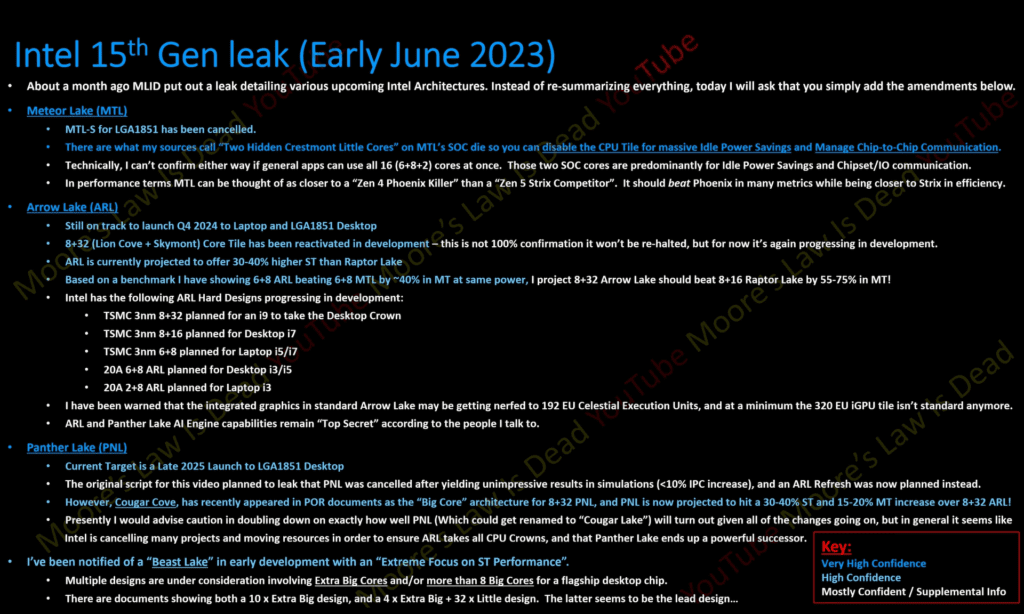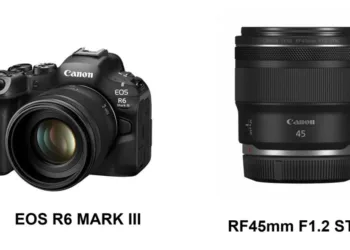Intel appears to be planning numerous Desktop CPU product lines for its 15th Generation range, which will include Arrow Lake, Panther Lake, and Beast Lake. Moore’s Law is Dead provides the information, which discusses what we can expect from the next Intel Desktop CPU lineup.
According to rumours, the Intel 15th Gen Desktop CPU lineup will include at least four families, beginning with Meteor Lake-S, but recent reports indicate that Meteor Lake-S will not be available for purchase and that the 14th Gen family will instead include refreshed Raptor Lake chips that focus on higher clock speeds with higher power draw and support for faster memory speeds.
The Intel Arrow Lake-S family of desktop processors will be the first to support the new LGA 1851 socket platform. The CPUs are expected to be released in Q4 2024, with up to 8 P-Cores based on the Lion Cove design and 32 E-Cores based on the Skymont architecture.
In terms of performance, MLID believes that the Intel Arrow Lake-S Desktop CPUs can provide a 30-40% improvement in single-threaded performance over Raptor Lake.

The CPU is estimated to provide a 40% improvement in multi-threaded performance on a 6+8 configuration at the same power, therefore overall desktop performance increase could be in the 50%+ range versus the fastest 8+16 processors. Once again, there’s talk of a 192 EU Xe2-LPG GPU for Battlemage and a new AI engine.
Panther Lake and Beast Lake CPUs for the LGA 1851 desktop family are rumoured to be introduced by Intel. Intel has already announced the development of Panther Lake, which is slated to be released in late 2025 and would include Cougar Cove cores as P-Cores.
It will also be available in 8+32 configurations, with a 30-40% improvement in single-threaded performance and up to a 20% increase in multi-threaded performance over the 8+32 Arrow Lake-S components.
Intel is also expected to launch a completely new family of desktop CPUs called as Beast Lake, which will build on Arrow Lake and Panther Lake. This could be the first chip to go through the 8 P-Core barrier, with numerous configurations including up to 10 Big-Cores and 32 Little Cores.
Also Read:








